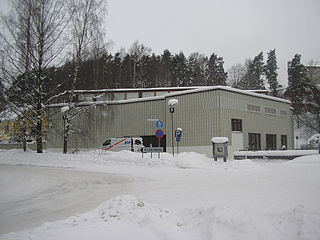 W
WThe Alvar Aalto Museum is a Finnish museum operating in two cities, Jyväskylä and Helsinki, in two locations each. All four locations are open to the public. They are:The Alvar Aalto Museum in Jyväskylä, which is a museum specialised in architecture and design and functions as the national and international centre on all things Aalto. The Muuratsalo Experiential House Villa Aalto in Munkkiniemi, Helsinki Studio Aalto, also in Munkkiniemi, Helsinki
 W
WAn architecture museum is a museum dedicated to educating visitors about architecture in general or with a focus on a specific architectural style. Architecture museums may also educate visitors on the traditional history of architecture or art, which can provide useful context for many architecture exhibits. They are often chartered with the principle of advancing public education on how design can positively impact the human environment. Some architecture museums, such as the Chicago Athenaeum also educate visitors in a variety of other related fields, such as urban design, landscape design, interior design, and historic preservation.
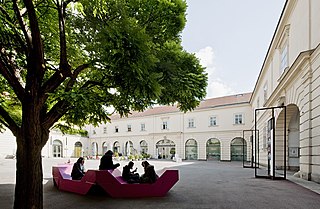 W
WThe Architekturzentrum Wien is a museum in Vienna, in the Museumsquartier. It is conceived as a centre for exhibitions, events and research into architecture and related topics, particularly the architecture and urban design of the 20th and 21st centuries. It is the national architecture museum of Austria.
 W
WLocated in Mexico City, Archivo Diseño y Arquitectura is a space dedicated to exhibiting, researching and rethinking design in its many forms and outlets. Founded by Mexican architect Fernando Romero and his wife Soumaya Slim in 2012, Archivo houses two collections: a design collection of over 1,500 objects, both international and of Mexican origin, and the personal library of the well-known Mexican modernist architect, Enrique del Moral.
 W
WArchizoom is an architecture museum settled on the campus of the École polytechnique fédérale de Lausanne, in Lausanne (Switzerland). It provides a public programme of exhibitions, lectures and events for the ENAC Faculty.
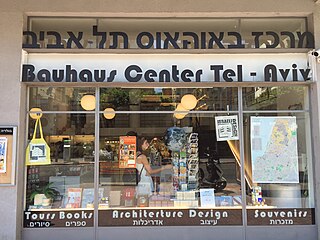 W
WBauhaus Center Tel Aviv is an organization concerned with Bauhaus architecture and design in the city of Tel Aviv, Israel. Buildings designed in the International Style, commonly known as Bauhaus, comprise most of the center of Tel Aviv known as The White City. The vision behind the Center is to raise awareness of the Bauhaus heritage and be part of the cultural and artistic development in Tel Aviv.
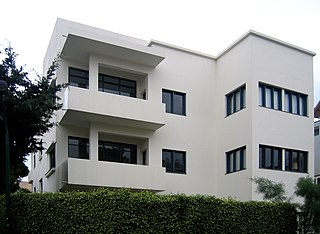 W
WThe Bauhaus Foundation in Tel Aviv, Israel, has a private museum on the ground floor of a building built in the International Style in 1934, located on 21 Bialik Street. It is owned by American billionaire, businessperson, art collector and philanthropist Ronald Lauder.
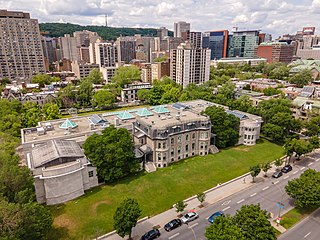 W
WThe Canadian Centre for Architecture is a museum of architecture and research centre in Montreal, Quebec, Canada. It is located at 1920 Baile Street, between Fort Street and Saint-Marc Street in what was once part of the Golden Square Mile. Today, it is considered to be located in the Shaughnessy Village neighbourhood of the borough of Ville-Marie.
 W
WThe Cité de l'Architecture et du Patrimoine is a museum of architecture and monumental sculpture located in the Palais de Chaillot (Trocadéro), in Paris, France. Its permanent collection is also known as Musée des Monuments Français. It was established in 1879 by Eugène Viollet-le-Duc. The museum was renovated in 2007 and covers 9,000 square meters of gallery space. Alongside temporary exhibitions, it is made of three permanent exhibits :Galerie des Moulages: casts of monumental French architecture from the 12th to the 18th centuries, such as portals of cathedrals. Galerie des Peintures Murales et des Vitraux: copies of murals and stained glasses from French Romanesque and Gothic churches. Galerie Moderne et Contemporaine: models of French and international architecture from 1850 to the present day.
 W
WDanish Architecture Center, (DAC), is Denmark’s national center for the development and dissemination of knowledge about architecture, building and urban development.
 W
WThe Village Museum formally National Museum of the Village "Dimitrie Gusti" is an open-air ethnographic museum located in the King Michael I Park, showcasing traditional Romanian village life. The museum extends to over 100,000 m2, and contains 272 authentic peasant farms and houses from all over Romania.
 W
WThe Gayer-Anderson Museum is an art museum located in Cairo, Egypt. It is situated adjacent to the Mosque of Ahmad ibn Tulun in the Sayyida Zeinab neighborhood. The building takes its name from Major R.G. Gayer-Anderson Pasha, who resided in the house between 1935 and 1942 with special permission from the Egyptian Government. The museum is noted for being one of the best-preserved examples of 17th-century domestic architecture left in Cairo, and also for its vast collection of furniture, carpets, curio, and other objects.
 W
WThe Ivan the Great Bell Tower is a church tower inside the Moscow Kremlin complex. With a total height of 81 metres (266 ft), it is the tallest tower and structure of the Kremlin. It was built in 1508 on Cathedral Square for the three Russian Orthodox cathedrals, namely the Assumption, the Archangel and the Annunciation, which do not have their own belfries. It serves as a part of Moscow Kremlin Museums.
 W
WJugendstilsenteret is an Art Nouveau Center located in central Ålesund, in Møre og Romsdal, Norway.
 W
WArchitectural and ethnographic museum Khokhlovka is an open-air museum in Perm Krai, Russia. It is located in the Perm municipal district, on the right bank of the Kama River, 43 km from Perm. It was founded in 1969 and opened for visitors in 1980. It is the first open-air architectural museum of wooden architecture in the Ural.
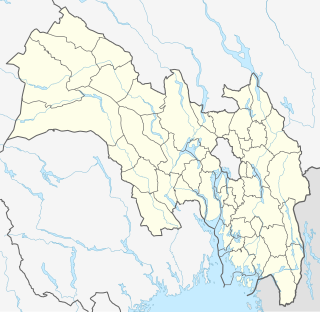 W
WThe Kistefos Museum is a contemporary art museum and sculpture park located in Jevnaker, Norway. The art park first opened to the public in 1996 with an exhibition of 25 sculptures. Founded by Christen Sveaas, the biggest shareholder of Kistefos, a privately owned investment company, the museum sits on the site of a disused wood pulp mill and includes the Kistefossen waterfall. The 17.6-hectare art park runs around the Randselva river and the surrounding areas, including old factory buildings such as the pulp mill and other buildings leased by the Kistefos group. With donations from the Jevnaker municipality and Christen Sveaas, Kistefos holds two art galleries, a museum, and a sculpture park currently containing 46 sculptures, by both Norwegian and international artists. Kistefos Museum was listed as one of ten technical and industrial cultural heritage sites by the Norwegian Directorate for Cultural Heritage, acting as a modern, industrial monument worth preserving as part of Norwegian and Scandinavian culture.
 W
WKolomenskoye is a former royal estate situated several kilometers to the southeast of the city center of Moscow, Russia, on the ancient road leading to the town of Kolomna. The 390 hectare scenic area overlooks the steep banks of the Moskva River. It became a part of Moscow in the 1960s.
 W
WThe Latvian Museum of Architecture is a museum in Riga, Latvia. It is housed in an old medieval building in Old Riga and belongs to the Latvian Museum Association.
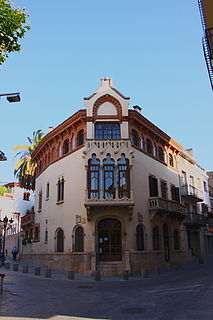 W
WThe Lluís Domènech i Montaner House-Museum, in Canet de Mar, in the region of El Maresme, is a space dedicated to the study of the life and works of architect Lluís Domènech i Montaner. The House-Museum includes the Domènech house, a work of the architect in collaboration with his son, Pere Domènech and his son-in-law, Francesc Guàrdia, and the 16th-century Can Rocosa farmhouse, which Domènech i Montaner converted into his workshop-study. The House-Museum is part of the Barcelona Provincial Council Local Museum Network.
 W
WOpen-air Museum of the Łódź Wooden Architecture is an integral part of the Central Museum of Textiles in Łódź. It is located on the main artery of Łódź, Piotrkowska Street, next to the Władysław Reymont Park.
 W
WThe Palacio de Bellas Artes is a prominent cultural center in Mexico City. It has hosted notable events in music, dance, theatre, opera and literature in Mexico and has held important exhibitions of painting, sculpture and photography. Consequently, the Palacio de Bellas Artes has been called the "Cathedral of Art in Mexico". The building is located on the western side of the historic center of Mexico City next to the Alameda Central park.
 W
WThe Museum of Architecture is in Wrocław, Poland. The museum was founded in 1965 and located in the historic Old Town.
 W
WThe Museum of Art, Architecture and Technology (MAAT) is a museum in Lisbon, Portugal.
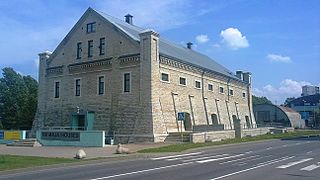 W
WMuseum of Estonian Architecture is an architecture museum in Tallinn, Estonia. It is located in the Rotermann quarter. The museum is a member of ICAM.
 W
WThe Museum of Finnish Architecture is an architectural museum in Helsinki, Finland. Established in 1956, it is the second oldest museum of its kind devoted specifically to architecture. The museum was founded on the basis of the photographic collection of the Finnish Association of Architects (SAFA), which was established in 1949.
 W
WMuseum of Folk Architecture and Life is an open-air museum located in Uzhhorod, Ukraine. It features over 30 traditional structures collected from villages across Zakarpattia Oblast, the Ukrainian province of which Uzhgorod is the capital. According to Michael Benanav of The New York Times, "the museum's centerpiece is 16th-century St. Michael's Church, with a roof and onion-domed steeple covered in wooden shingles." Uzhgorod Castle, located nearby, is an imposing fortress that housed the regents of the Habsburgs.
 W
WThe Museum of Metz, in Metz, France, was founded in 1839. It is a labyrinthine organization of rooms, incorporating the ancient Petites Carmes Abbey, the Chèvremont granary, and the Trinitaires church. The institution is organized into four broad sections:The history and archeological museum, containing rich collections of Gallo-Roman finds — extension works to the museums in the 1930s revealed the vestiges of Gallo-Roman baths; The medieval department; The museum of architecture; The museum of fine arts.
 W
WThe National Museum of Art, Architecture and Design, also known as the National Museum, in Oslo is a Norwegian state-owned museum.
 W
WThe Pavillon de l'Arsenal is the Paris Center for architecture and urbanism, a center for urban planning and museum located in the 4th arrondissement at 21, boulevard Morland, Paris, France. It is open daily except Mondays; admission is free.
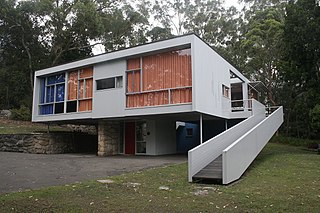 W
WRose Seidler House is a heritage-listed former residence and now house museum located at 69-71 Clissold Road in the Sydney suburb of Wahroonga in the Ku-ring-gai Council local government area of New South Wales, Australia. It was designed by Harry Seidler and built from 1948 to 1950 by Bret R. Lake. It is also known as In neighbourhood precinct with Marcus Seidler House and Teplitzky House or Rose House. The property is owned by the NSW Office of Environment and Heritage, an agency of the Government of New South Wales. It was added to the New South Wales State Heritage Register on 2 April 1999.
 W
WThe Shchusev State Museum of Architecture is a national museum of Russian Architecture located in Moscow the capital of Russia and also a research centre to study and promote the architectural and urban heritage. The museum was founded in 1934 and is located on the Vozdvizhenka Street. The collections include more than 800000 items. The museum is named after Russian and Soviet architect Alexey Shchusev.
 W
WSuan Pakkad Palace or Suan Pakkard Palace is a museum in Bangkok, Thailand. It is located on Sri Ayutthaya Road, south of the Victory Monument. The museum has Thai antiques on display, including Ban Chiang pottery over 4,000 years old. Originally the home of Prince Chumbhotbongs Paribatra and his wife, they converted it into a museum which opened in 1952. The museum features a group of four traditional Thai houses with covered hallways between them. There is also artwork on display in its Marsi Gallery.
 W
WThe Swedish Centre for Architecture and Design or ArkDes, previously known as the Museum of Architecture (Arkitekturmuseet), is a Swedish national museum dedicated to architecture and design. It is located on the island of Skeppsholmen in Stockholm, Sweden, in the same complex as Moderna Museet. The museum exhibits architecture, urban planning and design under its current director Kieran Long. It is an administrative authority under the Ministry of Culture.
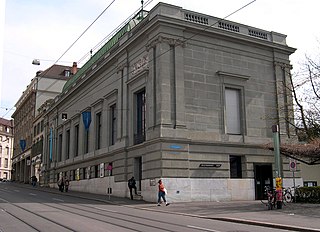 W
WThe S AM Swiss Architecture Museum is an architecture museum in Basel (Switzerland). Through its program of temporary exhibitions and events, it contributes to international debates on architecture and urban development as well as related socio-political aspects. In addition, the museum issues publications and holds special events in conjunction with the exhibitions. Its premises are located within the Kunsthalle Basel.
 W
WTaganrog Museum of Architecture and Urbanism is a museum in the city of Taganrog, Russia. The building was designed by the architect Fyodor Schechtel's studio.
 W
WThe Vienna Museum is a group of museums in Vienna consisting of the museums of the history of the city. In addition to the main building in Karlsplatz and the Hermesvilla, the group includes numerous specialised museums, musicians' residences and archaeological excavations.
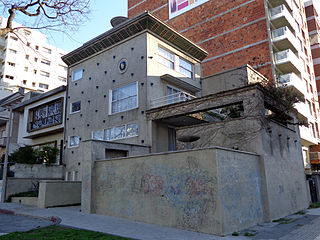 W
WThe Vilamajó House Museum is located in the house that the architect Julio Vilamajó built for his family in 1930 in Montevideo, being the first modern dwelling to open its doors as a museum house in Uruguay. The Vilamajó House Museum is the materialization of an initiative of the School of Architecture at the University of the Republic which, in agreement with the Ministry of Education and Culture, owner of the property, opened its doors to the public in May 2012. The museum has been envisaged as a research and promotion center addressing the life and work of Vilamajó and of architecture and design as disciplines open to the society.
 W
WVilla La Roche, also Maison La Roche, is a house in Paris, designed by Le Corbusier and his cousin Pierre Jeanneret in 1923–1925. It was designed for Raoul La Roche, a Swiss banker from Basel and collector of avant-garde art. Villa La Roche now houses the Fondation Le Corbusier.
 W
WVilla Tugendhat is an architecturally significant building in Brno, Czech Republic. It is one of the pioneering prototypes of modern architecture in Europe, and was designed by the German architects Ludwig Mies van der Rohe and Lilly Reich. Built of reinforced concrete between 1928 and 1930 for Fritz Tugendhat and his wife Greta, the villa soon became an icon of modernism. Famous for its revolutionary use of space and industrial building materials, the building was added to the UNESCO World Heritage List in 2001.